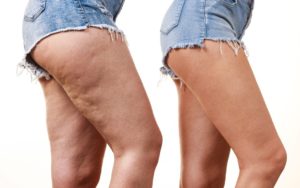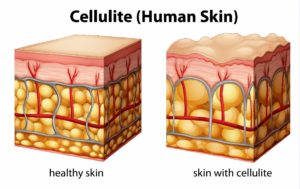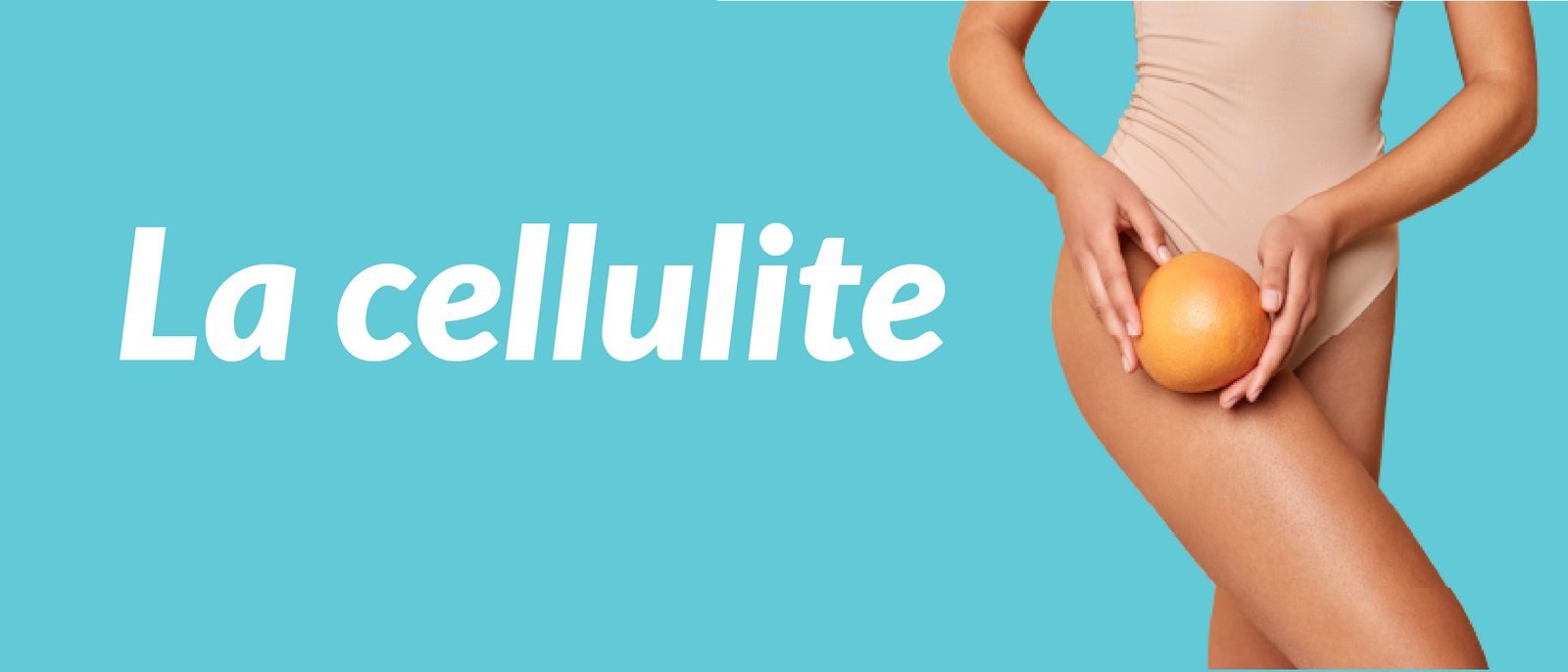What is cellulite and how can one get rid of it?
Cellulite appears as a lump of fat that gives an "orange peel" effect. Certain areas are more prone than others, such as the thighs, abdomen, or hips.

Where does cellulite come from?
Cellulite can have various causes, of which here are the main ones:
- The hormonal factors
- The menopause
- Pregnancy and breastfeeding
- Hereditary factors
- The dietary factors
- The factors of blood circulation
- Stress
There are a variety of treatments for cellulite, some more effective and faster than others, but the most effective will always be to combine a treatment suitable for the type of cellulite being addressed with a balanced lifestyle. However, there are a few methods that can prove useful for all forms of cellulite, including:
- The famous "palper-rouler": a massage method that involves pinching the skin to activate lipolysis, which is the elimination of fat by fat cells, and to stimulate venous and lymphatic circulation. There are suction cups like Cellu-cup that can make this method even more effective. ( https://www.cellu-cup.com/fr/ ? )
- Creams and scrubs will enhance the effectiveness of the massage technique. It is better to prioritize treatments that contain active ingredients such as caffeine or essential oils (grapefruit, grape seed).
- Mesotherapy for cellulite is one of the most effective treatments, as it addresses the cause rather than the consequence. It involves injecting products into the micro-dermis based on the cause of the cellulite (adipose, aqueous, fibrous, or even infectious). Below, we will present our selection by type of cellulite.

The different forms of cellulite: aqueous, adipose, fibrous, or infectious.
Water cellulite
Due to the phenomenon of water retention, food intolerance, or poor venous or lymphatic circulation, aqueous cellulite is generally located in the legs, abdomen, or arms.
In general, cellulite is reduced by engaging in sports; in the case of aqueous cellulite, the most favored sports are lymphatic aquadrainage, aquagym, as well as swimming or cycling: gentle activities that pose no risk of shock to the veins.
Regarding food, it is important to prioritize those that are rich in antioxidants, vitamin P, and citro-flavonoids, such as red fruits or citrus fruits that promote good circulation. Salt should be limited as it increases the risk of water retention.
For mesotherapy against aqueous cellulite, we recommend: Liquid Hyaluronidase MCCM. It acts directly on the elimination of water retention. They activate lipolytic functions, thereby allowing for the elimination of fatty substances in certain parts of the body.
Hyaluronidase is defined as "an enzyme that decreases the viscosity of environments rich in hyaluronic acid." This means that it is a group of cells capable of dissolving/digesting/cutting extracellular matrix molecules if they are proteins. The extracellular matrix is composed, among other things, of salts, water, polysaccharides, and proteins, including collagen or hyaluronic acid. In short, hyaluronidase is capable of cutting the H2O molecule from hyaluronic acid, and thereby dissolving the H2O molecules responsible for aqueous cellulite.
More information can be found on the product sheet of Centrale Fillers.
Fat cellulite
Fat cellulite results from an abnormal accumulation of cells in the fatty tissue. When these cells enlarge and multiply, they hinder the circulation of toxins, which creates inflammation and "bumps" the skin.
Initially, the focus will be on increasing energy expenditure and building muscle. The most suitable sports would be those that are the most energy-demanding, such as cardio activities like running (if there are no joint issues), elliptical training, boxing, or cycling.
In terms of diet, it is advisable to prioritize organic whole grains, vegetable oils such as nut or rapeseed oil, lean meats, fish, and plenty of vegetables.
Regarding mesotherapy for adipose cellulite, Desobody Love Cosmedical is the latest innovation in injection for dissolving localized body fat.
It is a lipolytic injection, which destroys fat cells by damaging the membranes of fat cells and liquefying the fat in the treatment area.
Its active ingredient is sodium deoxycholate. It is the salt of deoxycholic acid, which is a secondary bile acid. It aids in the dissolution of fats. Once synthesized, it is used in the same way to solubilize adipose cells, which are then eliminated by the body.
Fibrous cellulite
Fibrous cellulite is a long-established form of cellulite. This type of cellulite results from the hardening and shortening of collagen fibers around fat cells. In short, it is the result of adipose cellulite that has accumulated over time. It is the most painful and the most difficult to dislodge. The skin may become hard to the touch.
Regarding nutrition, the advice is relatively the same as for fatty cellulite: prioritize fresh fruits and vegetables, legumes, and avoid fats and sugars. It would be wise to consider drinking enough, at least 1.5 liters of water per day, and to supplement if necessary with vitamins and trace elements.
Sport will be essential, particularly working on endurance to compel the body to draw from its reserves; more generally, strength training can allow for the development of all muscle groups and enhance the basal metabolism.
From the perspective of mesotherapy, Hyaluronidase 1500 UI- BCN is well indicated for fibrous cellulite. The formula of Hyaluronidase 1500 UI- BCN has been specifically designed to combat fibrous-type cellulite. The use of Hyaluronidase 1500 UI helps eliminate fat deposits, restore a smooth appearance to the skin, and promote the elimination of water retention.
It works in the same way as the liquid Hyaluronidase MCCM, by dissolving the H2O molecules responsible for aqueous cellulite.
Infectious cellulitis
Attention! Although it bears the same name and is often confused, it has nothing to do with these homonyms. Indeed, it results from a severe inflammation or a bacterial infection of the skin and presents as red, hot, and tense skin.
It is generally treated with antibiotics and requires a medical visit.
First, it would be necessary to diagnose the type of cellulite one is affected by, in order to limit it as much as possible. Likewise, since these causes are multifactorial, treating the cause rather than the symptoms is a more effective approach. A visit to a dermatologist may prove useful.
If you wish to lose weight, there is the lipolysis technique, if you would like to know more, feel free to take a look at our article on the subject!































































